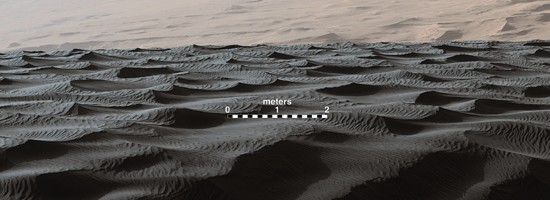NASA's Curiosity rover on Mars revealed fascinating sand dunes on Mars that are never seen before on Earth or on any other planet in the solar system.
These unique sand dunes are located in Bagnold Dunes which are situated in the northwest flank of the Red Planet's tallest peak, Mount Sharp. Curiosity has been exploring this region for the past six months, and discovered these amazing "ripples".
In this new study, scientists have determined how sand dune formations on both Mars and Earth may appear as massive as an entire football field and also smaller than 30 centimeters. Sand dunes are generally shaped by downwind forces, producing avalanches, which can make them steeper compared to upwind ones.
However, these sand dunes on Mars appear to be mid sized ripples that are not found anywhere on Earth.
According to NASA Curiosity mission scientist, Mathieu Lapotre of Caltech, Earth and Mars may have both big and small sand dunes and ripples, however, on Mars, there is something in between the size of these ripples that we do not possess on Earth.
The team also confirms that these deposits were created as wind blows over the surface of the sand. However, on Mars, these sand dunes appear similar to the shape of and spacing of ripples that can be seen underwater on Earth, which are known as wind-drag ripples.
Apparently, scientists have determined that Martian winds can drag sand particles in a similar manner like how water drags sand particles under the oceans and seas on Earth where the size of these ripples is also related to the density of the atmosphere of Mars.
Scientists now suggest that these formations with the size of roughly a meter each is due to the thick atmosphere of Mars during its evolutionary history. The ripple sizes are also considered as a geological record of the atmosphere thinning of Mars, indicating how similar geological formations like these ripples may appear on Earth and Mars but can still be different in size due to differences in atmospheric pressure and gravity.
Further analysis on the textural properties of the ripples that are preserved in sandstone reveal that they are more than 3 billion years old. This new study is published in the journal Science.



























